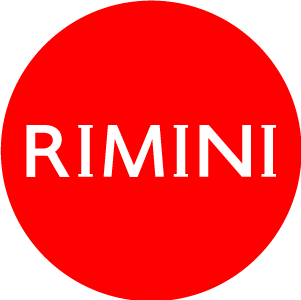On 30 July 1843, the 'Stabilimento privilegiato dei Bagni Marittimi', the first bathing estabilishment, was inaugurated in Rimini on the initiative of Ruggero and Alessandro Baldini, and the doctor Claudio Tintori. This date marked the beginning of the Italian and international history of seaside tourism.
The revolutionary idea was to use the beach and the unspoilt nature to enjoy the benefits offered by the sea. The 'public' was predominantly aristocratic and motivated by therapeutic motives and by a 'health-conscious fashion' from northern Europe.
After up and down fortunes, in 1868 the Municipality of Rimini decided to take over the Azienda Bagni, the management of which was entrusted to the physiologist Paolo Mantegazza and Claudio Tintori: the new idea, futuristic for the time, was to create a resort combining wellness, health and recreation, which would lead to the total redevelopment of the area with the progressive transformation of the bathin establishment into the elegant Kursaal (1873) and the creation of the first tourist infrastructures: the new Platform of the Baths, the Hydrotherapy Establishment (1876), the restaurant-café chantantant called "Capanna Svizzera", and, later, the legendary Grand Hotel (1908) that would fascinate generations of tourists and citizens, including Federico Fellini.
With the birth of the new Bathing Establishment, an initial form of commercial exploitation of the beach was proposed. The curative purpose of the sea was flanked by the recreational one, determined by the strong development of social relations and relationships. Bathing tourism thus became a phenomenon that mainly interested the emerging middle classes. At the origin of this development phase was also the construction in 1861 of the railway line connecting Bologna to Ancona.
In the period between the two World Wars, the foundations were laid for the development of mass seaside tourism. Photographic production for tourism purposes grew exponentially, through reportages published in seaside magazines and thanks to the promotional activities of the 'Azienda di cura, soggiorno e turismo' (Rimini Tourist Board), established in 1928. Scenes of holidaymakers'life became the prevailing subjects of photo postcards and constituted a powerful tool for spreading the image of Rimini with its joyful beach.
Born as a political operation of the fascist regime, through the colony system, tourism experienced its greatest development with the economic boom after World War II. Rail transport was complemented by car transport, and the old villas were replaced by the hotel system, mainly through small family-run guesthouses, up to the largest and most efficient organised beach in the world today.
For more than two centuries, since the plunge into the sea of the first foreign bather in Rimini's history, the holiday capital has continued to welcome tourists, making them feel at ease.
Look at the images of 180 years of holidays in Rimini in the Gambalunga Archives or search through the photo archives for some images of seaside posters, which continue the tradition, begun with the refined advertising illustrations of the early twentieth century, when they spread the fame of the Riviera and the pleasures of sea bathing around the world. A tradition that the city has continued into the 2000s, entrusting, year after year, image creators the task of filtering the representation of Rimini through their artistic sensibility. Among the illustrators there are artists of the calibre of René Gruau, Gianluigi Toccafondo, Milo Manara, Lorenzo Cherubini aka Jovanotti, Luca Giovagnoli, Pablo Echaurren, Marco Morosini, Alessandro Bergonzoni, Francesca Ghermandi, the spray artist Eron, Francesco Bocchini, Marco Neri. They all have put their signature on Rimini posters, following in the footsteps of the famous tradition of seaside graphics that, since the 20th century, has included artists such as Marcello Dudovich, Alberto Bianchi and Adolfo Busi.
The latest of the artists to take up the tradition of the Rimini seaside poster is Aldo Drudi, the world's best-known racing designer, who has made the world of legendary motorcycling pilots appealing and desired for the city's new seaside image in 2016.


